hankyoreh
Links to other country sites 다른 나라 사이트 링크
Park Geun-hye’s political career goes from “election queen” to suspect in jail
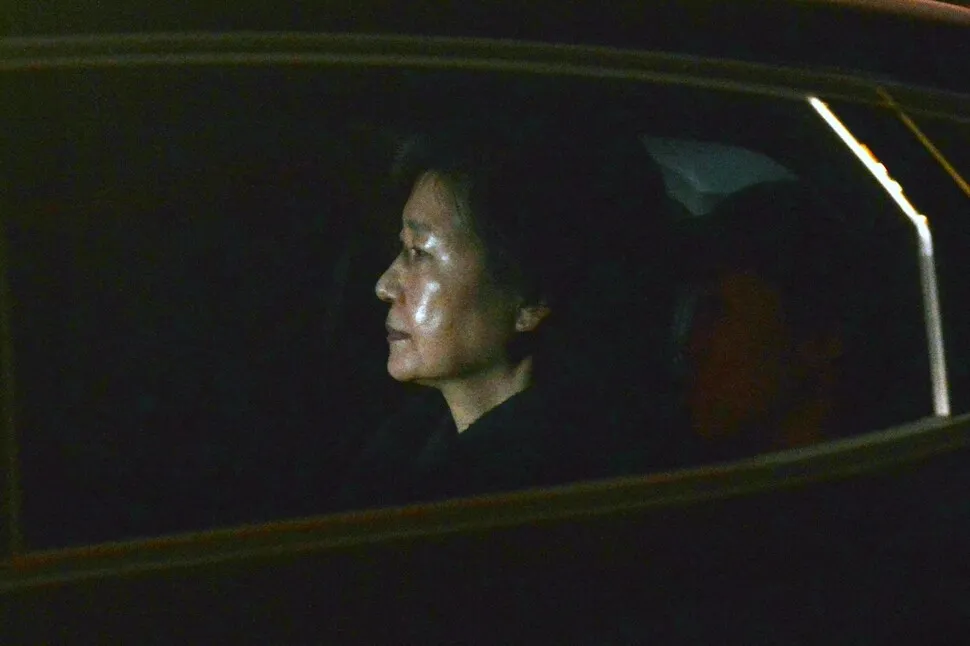
“Only by being a ‘public welfare’ president who always keeps her promises can I usher in the era of national happiness all of you have been waiting for.” (Inaugural address as 18th South Korean president, Feb. 25, 2013)
“I feel dismayed to all of you in the public. I will submit faithfully to being questioned.” (Before being questioned by prosecutors on Mar. 21, 2017)
Four years and three months after being elected, the same Park Geun-hye who vowed before the public to become a “public welfare president” and “a president for unity” was incarcerated on Mar. 31 as a suspect in 13 charges, including bribery. Her dramatic story - a president’s daughter who lost both parents to assassins’ bullets rising to become the first female president and part of the first father-daughter president pair - finally ended in tragedy.
From the time she ventured into the political fray in 1997 until her victory over an opposition party leader to become the first female president, Park was constantly at the center of South Korean politics. Identified with her father Park Chung-hee, she attained legendary status among conservatives. Both admiration and disillusionment toward Park were used as raw material to boost her as an incarnation of her father.
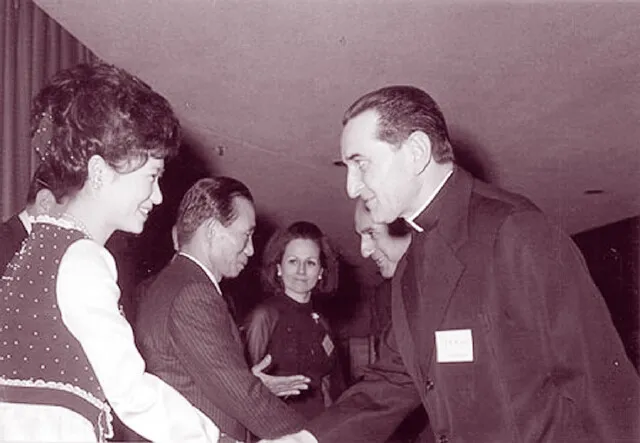
Having left the Blue House in 1979 following Park Chung-hee’s assassination, Park Geun-hye entered politics after the Asian financial risis of 1997. Feeling “scared everything the last generation accomplished could go up in smoke,” she made a declaration of support for then Hannara Party (precursor to today’s Liberty Korea Party) candidate Lee Hoi-chang just before the 1997 election and submitted an application to join the local branch in Gumi, her father’s hometown in North Gyeongsang Province. Three years into her first time as a lawmaker, Park was chosen as Hannara Party deputy leader in 2000. Apart from a nine-month period of “straying” with her founding of the Union for the Future Korea in 2002, she was a constant presence at the conservative party’s center. What allowed her to make such a dazzling political debut despite her untested mettle as a politician was, among other factors, nostalgia for Park Chung-hee among the industrialization generation, local Daegu-North Gyeongsang sentiments, and strong anti-Communist leanings.
Park ended up playing a pivotal role as “relief pitcher” in 2004, when the Hannara Party found itself in a crisis of the “cash truck” illegal political slush fund scandal and a backlash over the impeachment of then-President Roh Moo-hyun (2003-2008). Having emerged as party leader, she went to make use of an unheard-of “tent party headquarters” strategy to help it win 121 seats in a general election when it was expected to get fewer than 50. For the two years and three months until she stepped down as party leader in June 2006, the party racked up a 40-to-zero record against the ruling party in local and by-elections, earning Park the nickname of “election queen.” On May 20, 2006, she was attacked at Seoul’s Sinchon Rotary while stumping for a local election, suffering an 11-cm gash to her right cheek. Her response - asking “What about [the election situation in] Daejeon?” from her hospital bed - became famous. She also described the rest of her life after the attack as a “second, bonus life.”
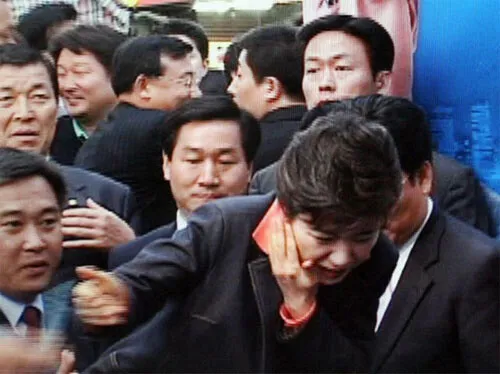
On the basis of her successes as party leader, Park emerged as a strong presidential candidate. In 2007, she ran as a candidate in the Hannara Party presidential primary against Lee Myung-bak, but lost. At the time, she declared that she would “cleanly accept” the primary outcome, leading many to praise her for committing herself to a run in the next election. But conflicts with Lee’s side escalated as soon as he took office. In Apr. 2008, lawmaker Kim Moo-sung and a number of other pro-Park lawmakers were sidestepped in nominations for the general election. “I was deceived, and the people were deceived,” Park said at the time. Frictions between Lee and Park reached their zenith with the 2009-10 controversy over amending the Sejong Administrative City plan. Park got Lee’s push to amend the plan voted down, delivering her first opposition speech since entering politics. The move established her as a “principled and trustworthy” politician and won her sympathies in the Chungcheong region (where Sejong is located).
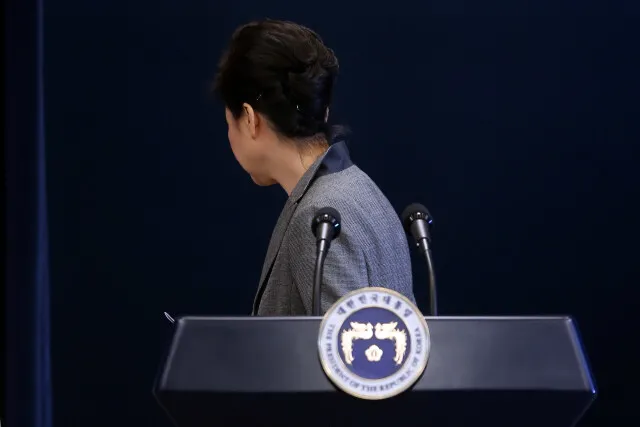
Having established strong leadership of the ruling party’s “in-house opposition,” Park once again took the mound as party relief pitcher in Dec. 2011. The Hannara Party was in crisis after the defeat of a vote in August for free school lunches in Seoul and a loss that October in the Seoul mayoral by-election. The party rule of then-leader Hong Joon-pyo was brought down by a scandal over a DDoS cyberattack against the National Election Commission - allowing Park to take center stage as head of the party’s “emergency countermeasures committee.” In addition to attempting to broaden the party’s reach by enlisting outside figures like progressive-leaning Kim Jong-in, Lee Sang-don, and Lee Jun-seok, Park also renamed it the Saenuri Party and changed its official color from blue to red. References to “economic democratization” and “welfare” were added to the party charter. The attempt to rebrand as something different from the Hannara Party was successful, and in the Apr. 2012 general election the Saenuri Party won a majority of 152 seats, beating back an opposition rallied behind the United Democratic Party (precursor to today’s Minjoo Party). Park also placed an overwhelming first with 84% of the votes in the party presidential primary, cementing her as the Saenuri candidate. In the presidential election that December, she defeated UDP candidate Moon Jae-in with 51.7% of the vote to become South Korea’s first female president.
But after she took office, Park’s incompetence began to show: numerous appointment disasters, accusations of “uncommunicativeness,” botched responses to the 2014 Sewol ferry sinking and 2015 MERS outbreak. Midway through her term, she began butting heads with the party’s non-Park leadership, including former party leader Kim Moo-sung and former floor leader Yoo Seong-min. Fears of turning into a “lame duck” prompted her to go wild, leading the way in dividing the public with unilateral decisions on hotly contested issues: state designation of history textbooks, an agreement with the Japanese government on the Japanese military comfort women issue on Dec. 28, 2015, closure of the Kaesong Industrial Complex, and deployment of a Terminal High Altitude Area Defense (THAAD) system.
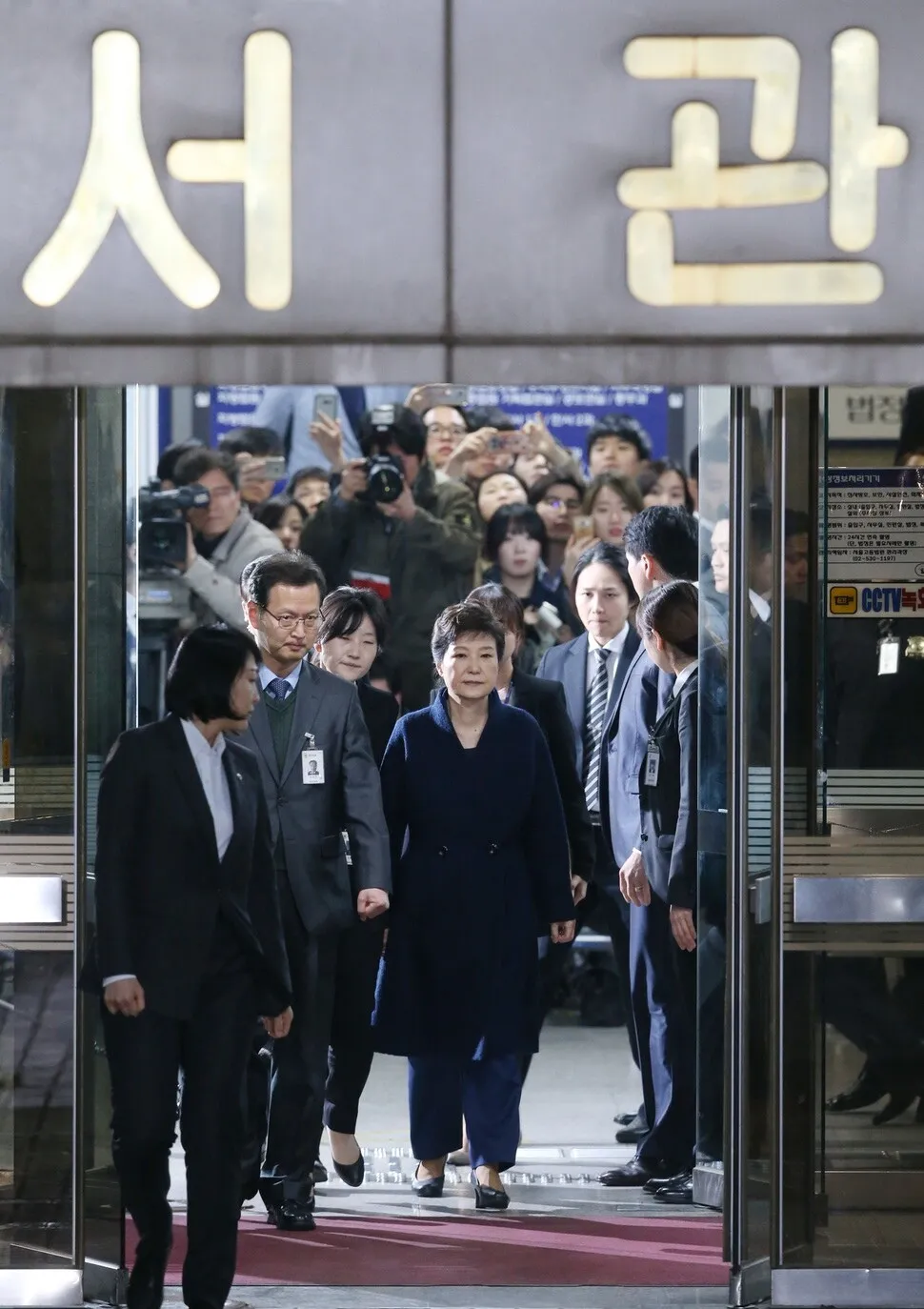
Her traditional support base of Daegu/North Gyeongsang residents and seniors over 60 continued to support her - but when the Choi Sun-sil government interference scandal broke in fall 2016, the shock waves sent Park’s support ratings plunging below 5%. As layer after layer of the scandal was pulled back, the South Korean public was left aghast. Under pressure from millions of candle-holding demonstrators, the National Assembly voted to impeach Park on Dec. 10 of last year. Ninety-two days later on Mar. 10, the Constitutional Court ruled to remove Park from office. From there, things proceeded rapidly: questioning by prosecutors on Mar. 21, an arrest warrant request on Mar. 27, and a warrant validity review on Mar. 30. On the morning of Mar. 30, a stone-faced Park entered the Seoul Central District Court building. She never got to return to her home in Seoul.
By Choi Hye-jung, staff reporter
Please direct questions or comments to [english@hani.co.kr]

Editorial・opinion
![[Column] Imperial tyranny, Korean humiliation [Column] Imperial tyranny, Korean humiliation](https://flexible.img.hani.co.kr/flexible/normal/500/300/imgdb/original/2025/0912/7617576652278449.jpg) [Column] Imperial tyranny, Korean humiliation
[Column] Imperial tyranny, Korean humiliation![[Correspondent’s column] Cognitive dissonance in MAGA world [Correspondent’s column] Cognitive dissonance in MAGA world](https://flexible.img.hani.co.kr/flexible/normal/500/300/imgdb/original/2025/0912/3417576648512186.jpg) [Correspondent’s column] Cognitive dissonance in MAGA world
[Correspondent’s column] Cognitive dissonance in MAGA world- [Editorial] Korea, US need a ‘gentlemen’s agreement’ on what job creation entails
- [Column] Why MAGA has its eyes set on Korea
- [Column] Lee still has his work cut out for him after summit with Trump
- [Editorial] Is this any way for the US to treat an ally?
- [Column] Lee’s difficult task of striking a balance on Japan
- [Editorial] Multipolar era means Seoul must broaden its diplomacy
- [Column] North and South Korea are no longer pawns in US-China-Russia relations
- [Column] Who we fail when we oversimplify the ‘comfort women’ issue
Most viewed articles
- 1Seoul says US must fix its visa system if it wants Korea’s investments
- 2North Korea said to have exposed numerous US spies after botched 2019 SEAL mission
- 3Freed workers arrive in Korea, one week after ICE raid in Georgia
- 4[Column] Imperial tyranny, Korean humiliation
- 5[Column] Why MAGA has its eyes set on Korea
- 6MAGA’s traveling circus comes to Korea
- 7Korea’s president says firms will be ‘very hesitant’ about investing in US after ICE raid
- 8[Correspondent’s column] Cognitive dissonance in MAGA world
- 9Lee says he won’t sign any tariff deal with US that doesn’t benefit Korea
- 10Son of ex-President Roh Tae-woo tapped to serve as ambassador to China